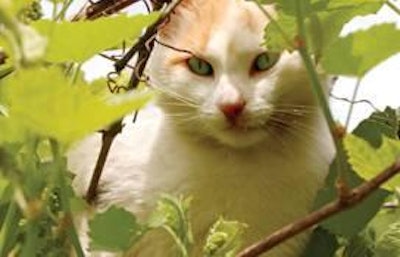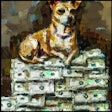
US retail sales of natural pet products had been growing at teen double-digit rates since 2002, but during 2007 sales leapt 43%, according to the Packaged Facts Natural, Organic and Eco-Friendly Pet Products in the US report. As major marketers of petfood stormed mass channels with line extensions and new brands, including Iams with Healthy Naturals and Mars with Goodlife Recipe, mass-market sales of petfood surged more than 500%, while sales in the pet specialty channel (where the large majority of natural petfood sales still occur) rose 15% as new and existing brands continued to trend toward natural.
Table 1. US retail sales of organic petfood
Table 2. US retail sales of natural pet products
Though sales continued strong in 2008, rising another 20%, 2009 was another story. The 2009 growth rate of natural pet products only slightly outpaced that of pet products overall, increasing just 6% as the recession took hold. Packaged Facts believes this slowdown to be temporary, however, with sales regaining steam in 2010 and edging back into the double digits in 2011.
Sales of organic petfood also felt the recessionary pinch. According to the Organic Trade Association’s 2010 Organic Industry Survey, the annual sales increase fell back to 10% in 2009, from 48% in 2008 and similarly impressive levels in prior years. Nevertheless, organic petfood since 2003 has lifted sales from US$14 million to US$85 million, or just shy of 6% of total sales of natural petfood.
There are two fast-track means of entering the natural and organic market according to Packaged Facts data: acquisition of natural specialists (Procter & Gamble acquiring Natura Pet Products earlier this year, for example) and introduction of new products by traditional marketers with some opting for line extensions and others for new brand lines. In the vast US petfood market, formulating and positioning products along natural, organic and holistic lines represents a way for traditional marketers to:
- Pique pet owners’ interest and convert them to more expensive fare;
- Carve out a niche or strengthen their foothold in pet specialty stores, natural supermarkets and online; and
- Set themselves apart from marketers still focusing on mainstream fare.
The top five US marketers of petfood are now heavily invested in the natural segment via new product introductions. In 2005, only two of these top marketers—Del Monte and Hill's Pet Nutrition—offered natural brands, and both of these were restricted to the pet specialty channel. Since then, Nestlé Purina, Mars and Iams have entered the field, all offering products in both the pet specialty and mass-market channels. All of the largest natural petfood marketers compete exclusively in the pet specialty channel, including Nutro (Mars), Natura (acquired by P&G), WellPet LLC and Natural Balance. Also heavily entrenched in natural, holistic and eco-friendly petfoods are a number of other sizable companies, including Central Garden & Pet’s Breeder’s Choice, Diamond Pet Foods, Midwestern Pet Foods (Earthborn Holistic) and Precise Pet Products.
Although pet specialty retailers remain the stronghold for natural petfoods and treats, the inroads made by mass marketers in recent years are clearly reflected in the shifting retail channel shares. During 2005, the mass market accounted for just 7% of natural pet product sales, but by the end of 2009 that figure had more than tripled to 25%, according to Packaged Facts. Because non-traditional channels including web retailers are often a great venue for natural sales, this sector has also risen in share, to account for nearly one-tenth of natural pet product sales. As a result of these incursions onto natural’s pet specialty home turf, this channel’s share has fallen from 88% to 66%.
Table 3. Share of US retail dollar sales of natural dog and cat food by form
Not surprisingly, particularly in a price-conscious era, affordability is an even bigger issue than availability. Among pet owners overall, half (52%) agree that they would buy natural/organic pet products more often if these products were more affordable, compared with only 22% who disagree. According to Organic Monitor, “The economic slowdown has reduced consumer spending power; organic food sales have been affected because of their price premium.” That said, and perhaps partly as a function of the down economy, the pace of entry into the organic segment by new companies has been relatively slow for the past couple years.


















